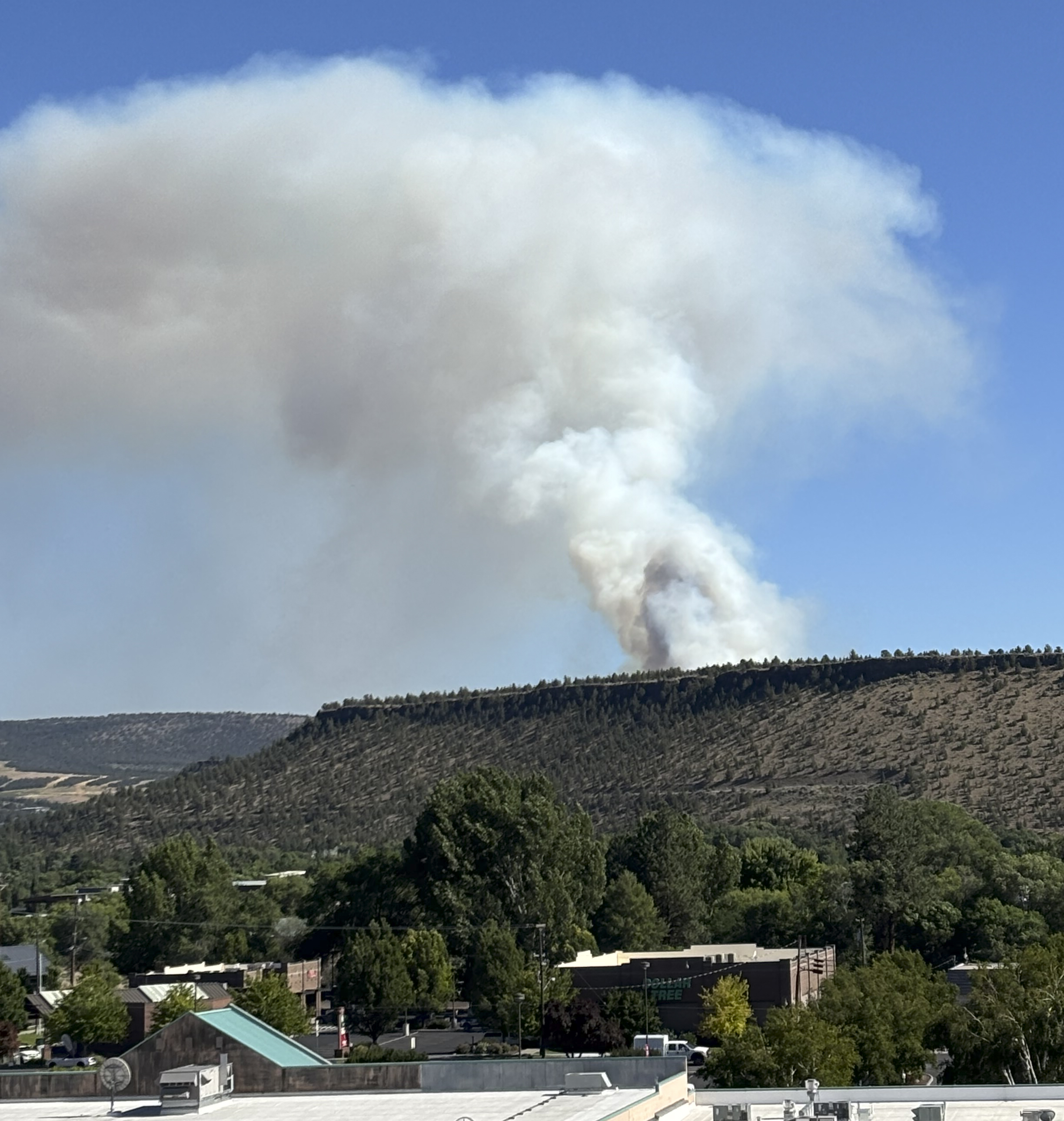Story of the John Day Dam’s namesake is remembered in 1968
Published 12:00 am Sunday, September 30, 2018
100 Years ago
For the week ending
Trending
Sept. 29, 1918
French people like Americans
French people are very solicitous about American soldiers and treat them accordingly, says Frank Grimsted, son of Mr. and Mrs. F.O. Grimsted of this city, who is in the service with the American expeditionary forces in France. He writes: “This is the first opportunity of writing I have had for some time. We are now stationed at a little village some distance behind the lines. The French people certainly treat us fine and we endeavor to treat them the same.
“They have some good wheat crops here. Runs on an average of 30 bushels per acre, many of the stands being as high as my shoulders. They are experiencing difficulty in getting their wheat cut. The women in the majority do the work in the fields. Some of the American boys went out today and helped them shock hay, and I intend going out soon. Some have binders and reapers to work with, while many others use the scythe and do the binding by hand.
“We are having fine weather here. Warm and sunshiny. I enjoyed my trip over very much, and certainly had a good time.”
Thousands see trophy train
Trending
Four-thousand people are estimated by the officials to have viewed the American trophies captured during the three-and-a-half hour visit of the train to this city last night.
The train arrived at shortly before 5 o’clock in the afternoon, and school children from the city and country schools were at the platform awaiting the arrival. The cars were opened for exhibition to the school children and members of the night school between 5 and 6 o’clock.
At between 6 and 7, after members of the crew and speakers had taken their dinners, the cars were opened to the general public and the speaking commenced, Robert E. Smith, state manager for the fourth Liberty loan, delivering the first address, followed by A.G. Clark, field manager for this district.
It was during this speaking and the next hour and a half when the crowd became the largest. Thousands of people lined up three and four abreast in a line, which extended nearly a block in length. Officials in the cars kept the crowds moving, so that the exhibition could be viewed by all before the departure of the train, and in this manner little or no delay was suffered.
Members of the Bend militia acted as guards, keeping the more curious off the cars on which were loaded cannon and heavier field pieces, which were viewed from the ground.
Man arrested At Pilot Butte
Alex Abrahams of Detroit, Michigan, was arrested at the Pilot Butte Inn by Chief of Police Nixon late last night and is being held pending his trial this afternoon on a charge of having liquor in his possession. The trial will be held before Judge Ellis, in the city court, being the first case to come up under the new city ordinance.
75 Years ago
For the week ending
Sept. 29, 1943
Clark Gable, on 50th mission, sees gun action over Nantes
Capt. Clark Gable, wearing green coveralls and a Mae West life jacket for his 50th combat mission over Europe, manned a nose gun during the Flying Fortress raid on Nantes today, and admitted, “I didn’t hit a damn thing.”
His plane — ”The Duchess” — fought off a Nazi fighter attack and returned to its base peppered with bullet and flak holes, but the former screen star was uninjured. He now plans to return to America to finish work on the gunnery training film he has been making here.
Gable said he spent most of his time during the raid making pictures in the waist section of the plane but went forward to man a nose gun while the ship was in the target area.
“Today was not quite as tough as our raid on the Ruhr but it still was tough enough,” he said.
“I’m going to celebrate my 50th mission just by eating lunch,” he added. Gable said one fighter got so close while he was operating his camera that “I could see the pilot’s features — that guy won’t be around long if he keeps fooling around like that. I don’t know how we missed him.”
Heavy formations of Fortresses struck at German U-boat and aviation facilities. Besides the Nantes naval base, they raided two air fields in western France, the Vannes-Meucom and Kerlin-Bastard bases from which the Germans fly against allied shipping in the Bay of Biscay.
The Nantes raiders ran into swarms of German fighters and some of the most accurate anti-aircraft fire the Americans have encountered yet. Crewmen were unable to see the detailed results of their bombing, but generally agreed that the attack was very successful.
Major combat action looms in rugged Wagontire region
Fourth Corps Headquarters, Oregon Maneuver Area — The blue forces were waging their heaviest onslaught today, using tanks against the reds who, obviously out-numbered in Fourth Corps maneuvers, apparently were committed to defense of the grocery store-post-office village of Wagontire on the Oregon desert.
The blues seemed to be poised for a knockout blow sometime today or tomorrow.
The fiercest fighting was being waged along a 20-mile front near Wagontire, where the reds were in strong defense positions on mountain slopes and to the east, crossing highway 395, 30 miles southwest of Burns.
The combat team commanded by Col. Michael Halloran held the left flank while the force commanded by Col. Macey Dill anchored the right flank.
Blue assault units were spearing south on Highway 20 under Maj. General William Livesay on the west and Brig. Gen. W.C. Dunkel on the east. The blues were using landmines as a defense against the reds.
Observers saw several mile-long columns of dust marking the progress of blue General Sherman tanks advancing against the reds, who apparently were strongly dug in with tank destroyers and three-inch guns ready to cut down the tank assault.
Radio transmission difficulties have made it necessary to keep radio relay planes in the air all day long. Messages come from maneuver directors headquarters and relay them to umpires who are scattered over the area. Mountains prevent direct radio communications from the director at headquarters to his umpires, making the planes necessary as relaying agents.
50 Years ago
For the week ending
Sept. 29, 1968
Who in the world was John Day?
Another great dam across the Columbia was dedicated this morning and we wonder what the speakers said about the man for whom it is named. Nothing very likely, nothing at all. Who was he? What did he do?
The historians can tell you. John Day wasn’t much of anyone. And he didn’t do much that was distinguished. What the historians can’t tell you is why he has been so honored by having so many things named after him.
He was born in Virginia, and when he was about 30, he turned up in Missouri. He was a hunter and a trapper. In 1810 when William Price Hunt was putting together the John Jacob Astor overland expedition to Oregon, Hunt hired Day as a hunter.
This was only four years after Lewis and Clark had returned, and the trail to Oregon was still generally unmarked. The Hunt party had a terrible time. In southern Idaho, the struggle to find enough food and water and to keep moving became so difficult that the party broke up.
Day, who had admitted to some hard living in his youth, apparently was not in the best of physical shape for this arduous journey. He suffered so from hunger that he could not keep up. A friend, Ramsey Crooks, stayed behind with him and they wandered about, always on the verge of starvation during the winter of 1811-12. Finally in the spring, they were able to make their way to the Columbia where, in short order, Indians seized them, stripped them of their ragged clothes and left them naked near the mouth of one of the Columbia’s tributaries.
There, by chance, they were found and rescued by Robert Stuart and other members of the straggling Astor party, and it was then, or shortly after, that the name John Day became geographic. The river he was found standing by, stark naked, half crazy with malnutrition, was named after him.
Washington Irving, who was induced by Astor to write an account of his ill-fated venture, wrote this description of Day: “He was about 40 years of age, tall, straight as an Indian and a handsome, open man. It was his boast that in his younger days, nothing could hurt or daunt him but he had “lived too fast” and injured his constitution by his excesses. Still he was strong of hand, bold of heart, a prime woodsman, and an unerring shot. He had the frank spirit of a Virginian, and the rough heroism of a pioneer of the west.”
He had recovered from his ordeal in the mountains, but before long, “symptoms of derangement” appeared. He tried to kill himself. Obviously, he was unfit to go on and the leader induced some friendly Indians to take the demented man back to Astoria.
Eventually, he recovered and spent the remaining years of his life trapping for the Northwest Fur Co. He died on Feb. 15, 1820.
That is the undistinguished story of John Day. The river was not named to honor him, but he was someway associated. The town took its name from the river, not the man. And now the Dam takes its name from the river that flows into the Columbia near the dam.
John Day has become over the years, Oregon’s favorite geographic name. Now we have the largest multipurpose dam, the latest pride of the northwest, which might have been Whitman, or McLaughlin, or Jason Lee, or Blanchet, or Astor, or Robert Gray — any one of a number of distinguished names associated with the early history of the region — carrying for all time to come the name of a demented mountain man.
25 years ago
For the week ending
Sept. 29, 1993
Doolittle boosted U.S. morale with 30-second raid
Retired Gen. James H. Doolittle whose daring, daylight bombing raid on Japan during World War II stunned the Japanese and lifted American morale, died at 96.
Doolittle set a string of aviation records in the 1920s and 30s, as an Army pilot and then as an employee of Shell Oil Co.
But he was remembered above all for the first bombing raid of the war on Japan. It took place on April 18, 1942.
The raid inflicted no major damage. A later Naval War College study could find no serious strategic reason for it.
But it stirred American morale, just four months after the shock of Pearl Harbor, and put the Japanese on notice that their cities were in reach of U.S. air power. No less than Spencer Tracy played Doolittle in the 1944 film “Thirty Seconds Over Tokyo”.
When president Bush gave Doolittle the Presidential Medal of Freedom in 1989, he described him as “the master of the calculate risk.” Doolittle also won the Medal of Honor and many other awards.
Shortly after the war, Doolittle told a senate committee: “You can’t lose a war if you have command of the air, and you can’t win a war if you haven’t.” After the United States entered World War I in 1917, Doolittle enlisted in the Army. He earned his wings in 1918 but the war ended before he saw duty in France. He stayed in the Army air service. In 1942 he returned to active duty.
The plan for the attack on Tokyo called for launching the planes just before dark, 500 miles from the Japanese coast. But while still 650 miles from the target, the Navy flotilla encountered Japanese patrol boats. Admiral William F. Halsey, fearing that surprise had been lost, ordered the B-25’s to take off at once.
The bombers sought out military and industrial targets in Tokyo, in the naval ports of Yokohama and Yokosuka, and in three other cities in the Japanese heartland.
The Americans encountered only ineffective fire during the midday raid.
After the raid the Doolittle raiders were to land at airfields in China. But the early takeoff, coupled with strong headwinds, depleted their fuel, and almost all had to bail out.
Three men drowned or were killed when they parachuted. Eight landed in Japanese-held China and were imprisoned, three later to be executed and a fourth to die in prison.
But Doolittle and 68 others came down in free China or the Soviet Union and eventually made their way back to U.S. forces.
Afterwards Doolittle was promoted from lieutenant colonel to brigadier general. President Reagan promoted him to four-star general in the Air Force Reserve in 1985.








